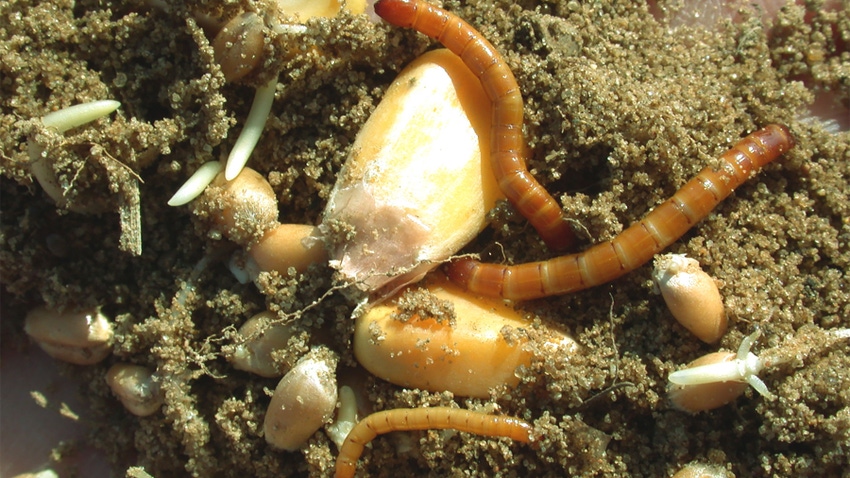February 8, 2024

Are no-tillers the only people who should worry about armyworms, wireworms, cutworms and slugs? We disk before planting. Should we take precautions?
The Indiana certified crop adviser panel answering this question includes Gene Flaningam, crops consultant, Vincennes; Carl Joern, Pioneer field agronomist, northeast Indiana; Greg Kneubuhler, agronomist, G&K Concepts Inc., Harlan; and Dan Quinn, Purdue Extension corn specialist.
Flaningam: Each pest has a specific niche. For example, armyworm moths use wind currents to travel and prefer lush growing vegetation for laying eggs. Wireworms like decaying residue and organic matter such as wheat straw or manure bedding. Cutworms also arrive on wind currents and prefer soybean stubble inhabited by winter annuals. Slugs also prefer high-residue fields with decaying organic matter. No-till environments and minimum-tillage farming can be prone to these pests. Management practices must be adjusted if environmental conditions create the right environment for each pest.
Joern: No-tillers are not the only growers who need to worry. By reducing tillage, a grower shifts the spectrum of pests and weeds. Many of these pests are attracted to “weedy” fields, grass waterways, fencerows and pastures. They often prefer cooler or wetter conditions, which are characteristic of reduced-tillage systems in most springs.
If you believe disking before planting helps with field warming and drying, this strategy could help. I contend prioritizing winter annual weed control in the fall would have a significant impact on these pests. Reducing residue and weed cover are two ways to discourage these pests.
Kneubuhler: No-till environments have a greater likelihood of pests like armyworms, wireworms, cutworms and slugs. That doesn’t mean a minimum-tillage system is immune. Understanding each pest is the best approach.
Armyworms and cutworms come in with southerly winds. Weather conditions dictate a lot of what happens. Wireworms, for example, have multiple years of generations. They tend to show up in certain soil types. If there is a history of them in a field, proper management is in order. Slugs can show up in high-residue and damp conditions. Not a lot can be done. Treatment options in-season can be fair at best.
The bottom line is, not all pests are the same, act the same or show up the same way. Plus, in most GMO seed today, the traits alone control most of them. Take precautions depending on your history, your conditions, your environment and the traits you’re using. In some cases, traits alone will protect you.
Quinn: No-tillers are not the only ones. However, these pests may become more prevalent in both no-till and cover crop systems with higher residue levels. We see them in continuous corn acres and rotated acres based on location, field history and residue levels.
The best precaution for these pests is hybrid selection with insect resistance traits and proper seed treatments for improved insect control. Maintaining crop rotations can also help with some pests. In addition, spend some time scouting your acres to determine what insect pests are the most prevalent, and in what environments are they most prevalent? This will help you understand where and how these pests should be managed. Certain pests such as slugs can be very difficult to manage. They may require more intensive management tactics and residue management.
You May Also Like




